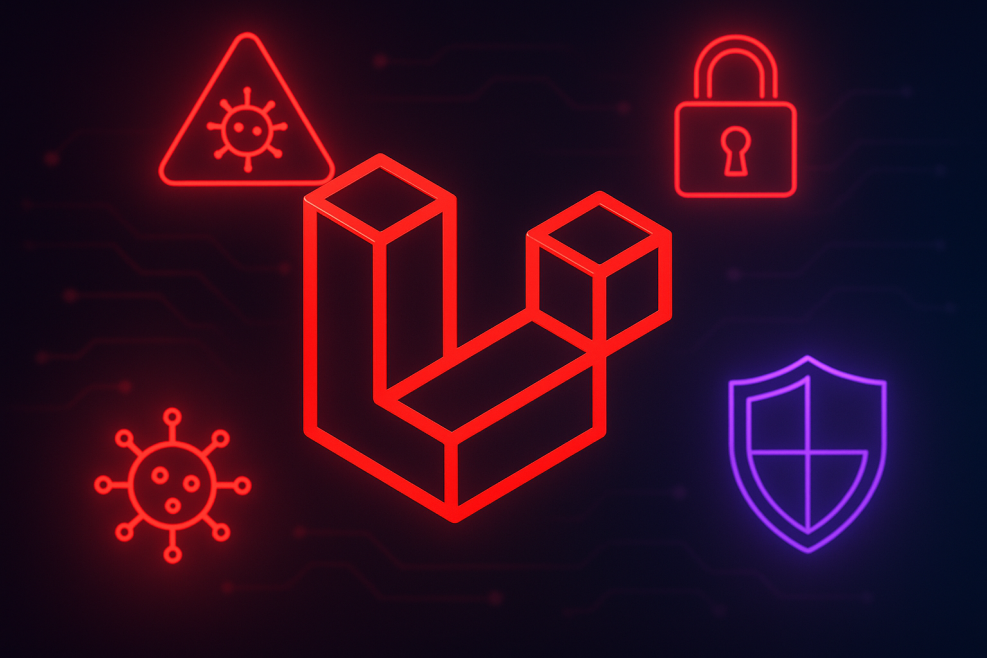If your Laravel package gets flagged for malware, act fast: isolate the project, run composer audits, remove suspicious code, and update dependencies. Malware in packages can slow down your app, leak data or break your app. Following Laravel security best practices like regular scans and safe rollbacks, keeps your projects safe in 2025.
Beyond quick fixes, it’s good to integrate automated security checks, monitor unusual network traffic, and schedule clean backups. These will protect your codebase, reduce downtime, and build trust in your app’s safety.
Spotting Malware in a Laravel Package
The first step to stop malware damage is to know what to look for. Even trusted projects can show early warning signs that many developers miss until it’s too late.
Watch out for:
- Unexpected file changes or new scripts in vendor or custom folders
- Slower response times, unexplained CPU spikes or memory leaks
- Outbound network requests to unknown domains or IPs
- Composer warnings, security scanner alerts or flagged dependencies
- Strange commits or updates from unknown contributors
Regular malware scans and dependency audits will catch these issues before they get out of hand.
Removing Malware: Step‑by‑Step Process
Once you spot signs of malware, act quickly to contain and clean your Laravel package before the damage spreads. Here’s how experienced developers tackle it safely:
Quarantine the project
Disconnect from production servers and stop new deployments to contain the risk.
Also Read: Laravel Performance Optimization Tips
Identify the source
Run an audit and check recent updates:
composer auditgit log --since="2 weeks ago"
Remove or replace malicious code
Delete suspicious files or scripts, then reinstall safe versions:
composer remove vendor/package-namecomposer require vendor/package-name
Patch dependencies and vulnerabilities
Update all libraries to the latest secure versions to stay aligned with Laravel security best practices.
composer update
Use tools like Dependabot, Renovate, or Snyk to catch new issues automatically.
Restore from a clean backup if needed
If cleanup fails or damage is deep, roll back to a verified backup created before the infection.
Daily Restore Points:
Laravel’s core framework now sees over300,000+ daily downloads in 2025 on Packagist. Daily tested backups help protect projects from unexpected malware or package issues.
Strengthening Laravel Package Security
Fixing malware isn’t enough; prevent it next time with a few practical habits.
- Use trusted sources: Only add packages from Packagist or vetted GitHub repos with active maintainers.
- Automate scans: Tools like Snyk, Dependabot, or Trivy flag risky updates before they ship.
- Monitor with Telescope: Catch suspicious requests, file changes, or resource spikes early.
Update often:
composer outdatedcomposer update
- Close security gaps before attackers find them.
- Keep backups: Schedule and test restores so recovery is quick if something slips through.
Small daily checks, automated dependency audits, and clean backups build strong security over time.
Pro Tips and Common Mistakes to Avoid
- Skip unknown repos: Installing random packages to “save time” often brings hidden risks.
- Never commit .env files: They can expose API keys or database passwords to attackers.
- Audit before updates: Always check what’s changing instead of blindly running updates.
- Review contributors: For team or open‑source projects, vet new contributors’ access and commits.
- Test in staging first: Catch issues early before they affect production.
Being cautious up front saves hours of cleanup and keeps your app safer long‑term.
Conclusion
Malware in a Laravel package can start small but lead to downtime, data leaks, or bigger security gaps. Acting fast, isolating, scanning, and removing threats helps stop damage early.
Staying safe isn’t one fix: keep dependencies updated, run audits, and use trusted tools. With steady updates, malware scans, and trusted rollbacks, your Laravel app stays secure, stable, and ready to grow.



